Purchase Payments Overview
The Purchase Payments model in Exsited describes how to record, process, and track payments made to suppliers for approved purchase invoices. This function ensures transparent, auditable, and efficient payment workflows within the Accounts Payable process.
Step-by-Step Process to Apply a Purchase Payment
1. Go to the Purchase Payments Module
- From the top menu, navigate to Purchase Payments.
- Click on Create Purchase Payment.
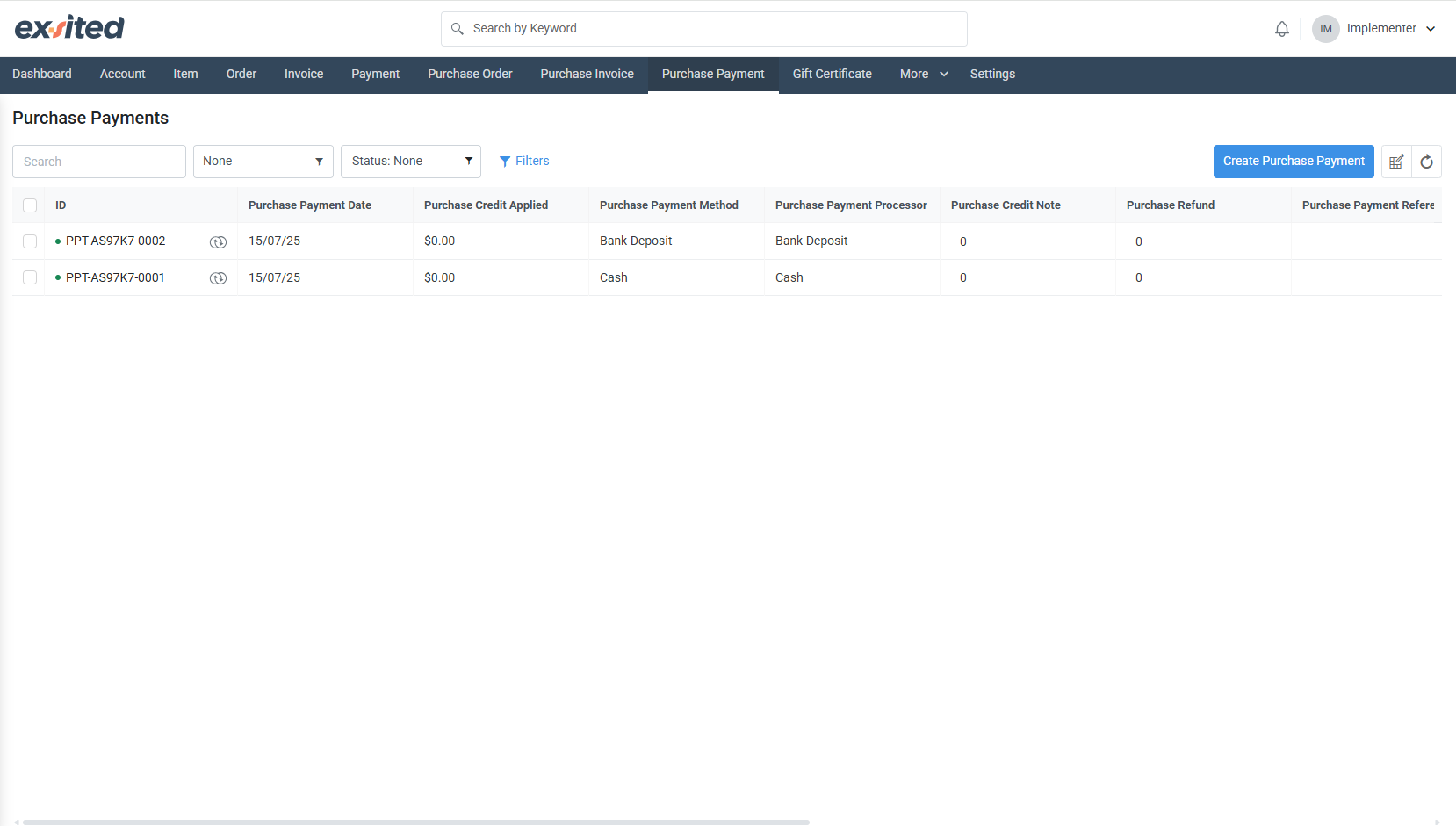
2. System-Generated Payment ID
- A Purchase Payment ID is generated automatically (e.g., PPT-AS97K7-0002).
- Choose or confirm:
- Purchase Payment Date
- Effective Date (defaults to the same as payment date if “Effective Immediately” is selected)
3. Link an Approved Purchase Invoice
- Select the Purchase Invoice ID (e.g., PI-AS97K7-0003)
- System auto-fills:
- Issue Date
- Due Date
- Invoice Total
- Outstanding Amount
4. Add Payment Method and Processor
- Click on Add Purchase Payment Options
- Choose:
- Payment Method (e.g., Cash_50LROJ (AUD))
- Payment Processor (e.g., Bank Deposit, Cheque)
- Input:
- Payment Amount
- Payment Reference (optional but recommended)
5. Apply the Payment
- Confirm or update Applied Amount (e.g., $10.00)
- Click Apply
- A success message will confirm:
“Purchase Payment has been applied successfully”
Example Purchase Payment Record:
| Field | Example |
|---|---|
| Purchase Payment ID | PPT-AS97K7-0002 |
| Payment Date | 15/07/25 |
| Linked Invoice ID | PI-AS97K7-0003 |
| Invoice Total | $10.00 |
| Outstanding | $0.00 (after full payment) |
| Payment Method | Cash_50LROJ (AUD) |
| Payment Processor | Bank Deposit |
| Payment Amount | $10.00 |
| Reference | Bank Deposit_RJ2FBI |
| Status | Active |
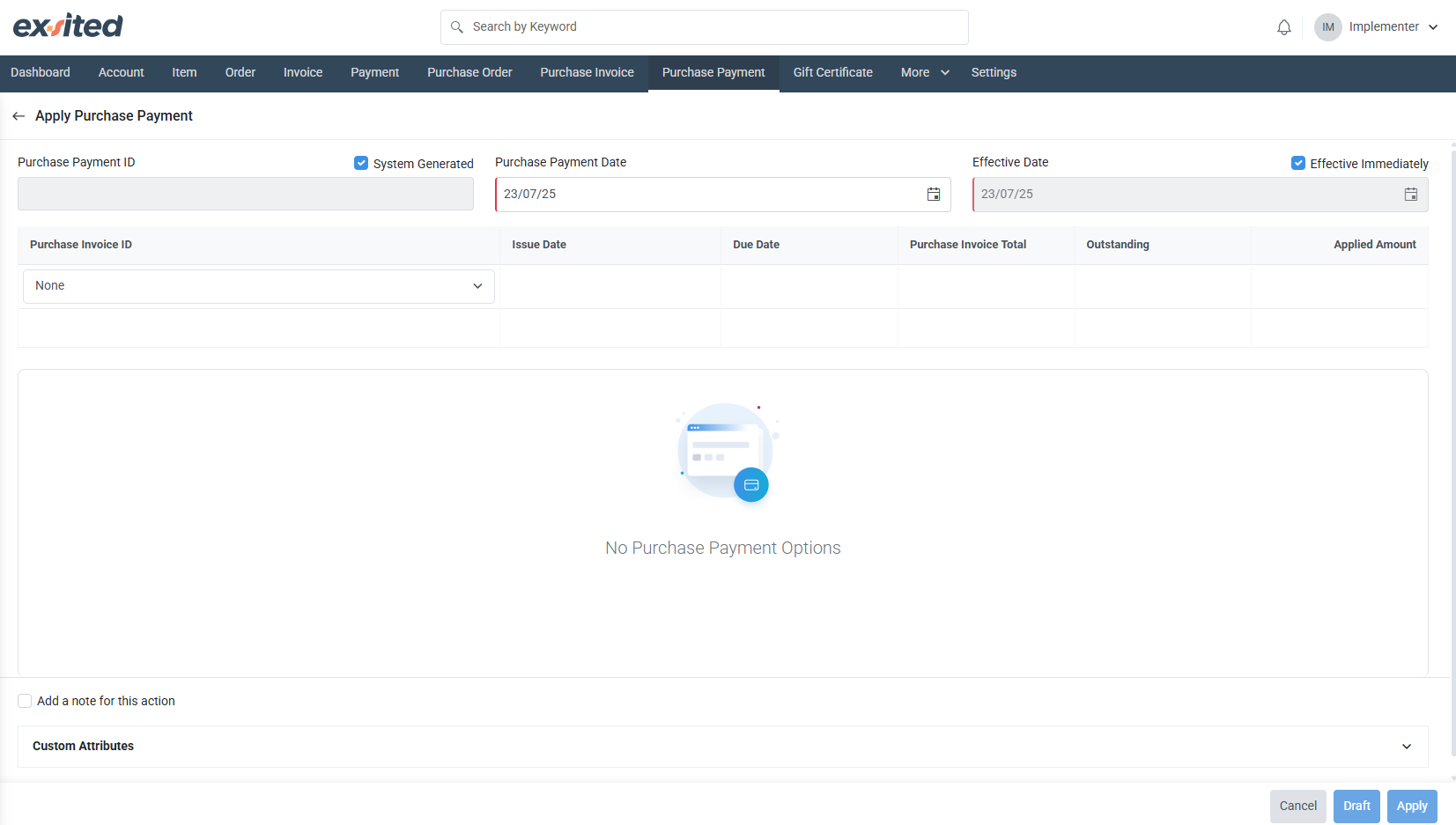
View Purchase Payment
Purchase Payment Information
This section provides a detailed overview of the payment made against a purchase invoice. It displays the payment status, amount applied, and relevant payment date. Key information such as the purchase invoice ID, due date, total amount, and paid amount is shown, along with the payment method used (e.g., Bank Deposit) and its reference ID. This section enables users to verify that the invoice has been fully paid and provides a transaction trace.
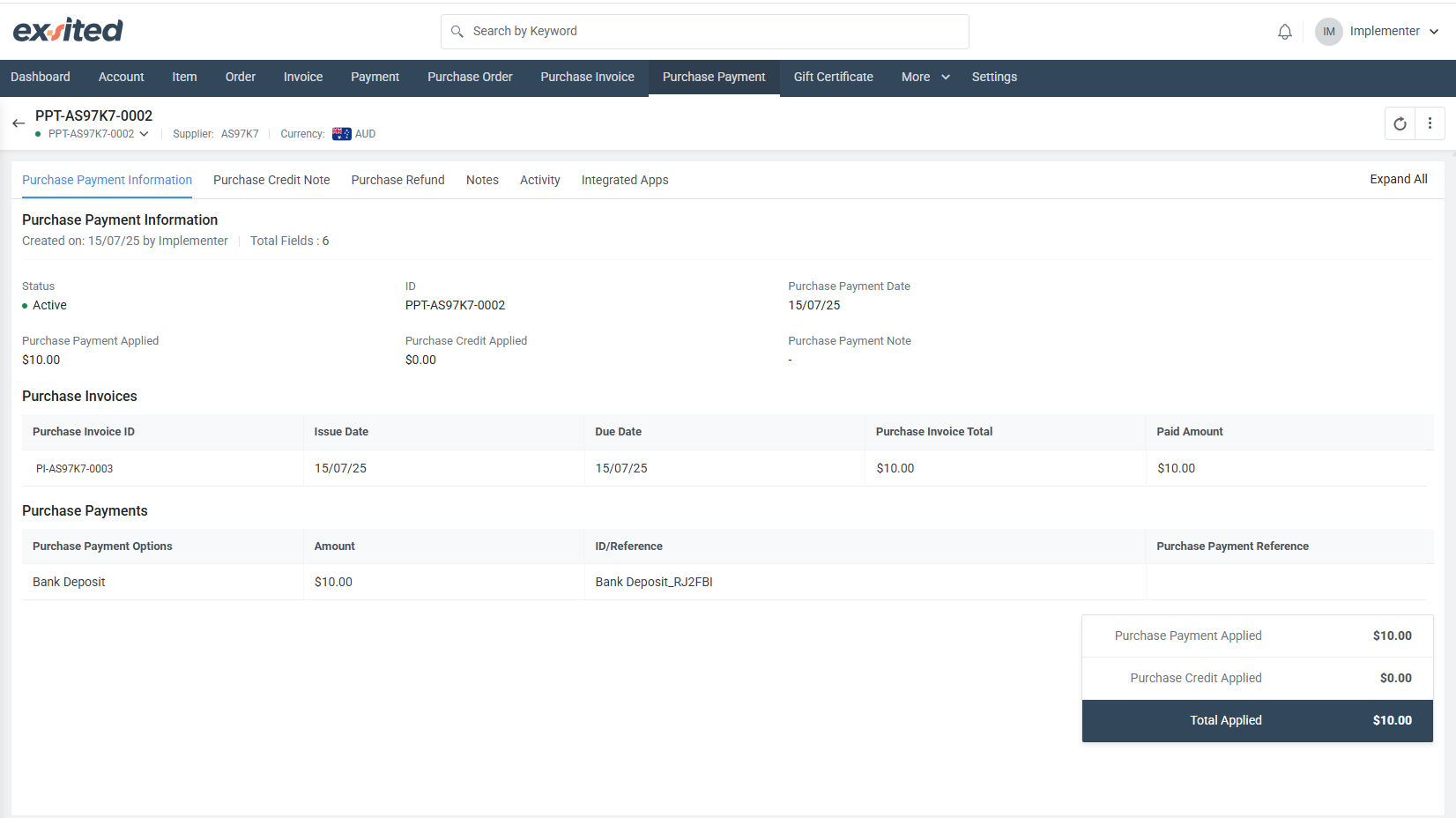
Purchase Credit Note
This section displays any credit notes issued against a purchase. It includes details such as the credit issue date, credit amount, remaining balance, and the associated purchase payment. It also shows who created the credit note and when. If no credit notes have been issued, the section will indicate that no data is available. This area helps users track supplier credits that can be applied to future or existing payments.
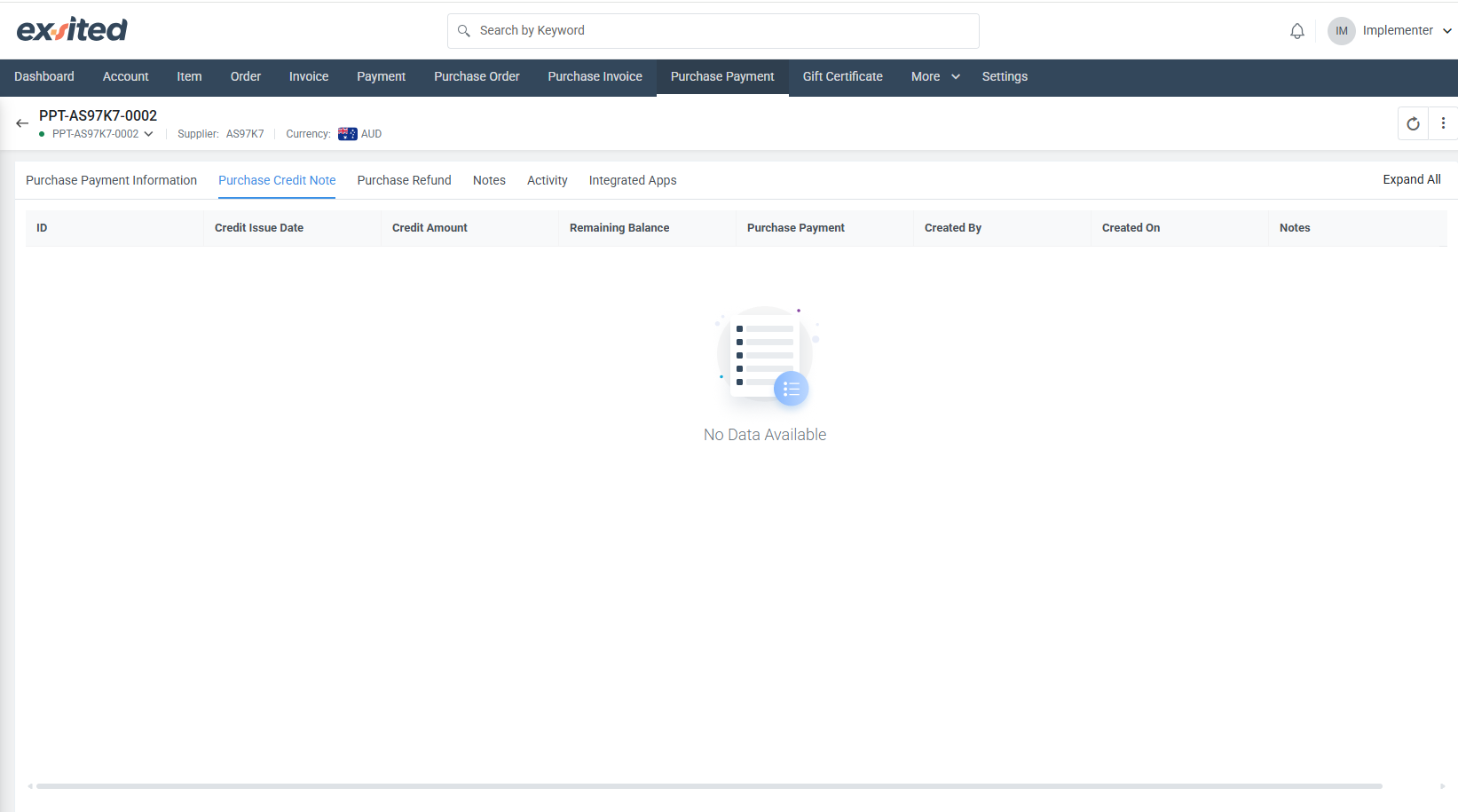
Purchase Refund
This section shows any refunds issued for purchases. It includes details such as the refund date, refund amount, processor, related refund request, linked credit note, creator, and creation date. If no refunds have been issued, the section will display a "No Data Available" message. This tab helps monitor and track supplier refunds related to overpayments, returns, or billing adjustments.
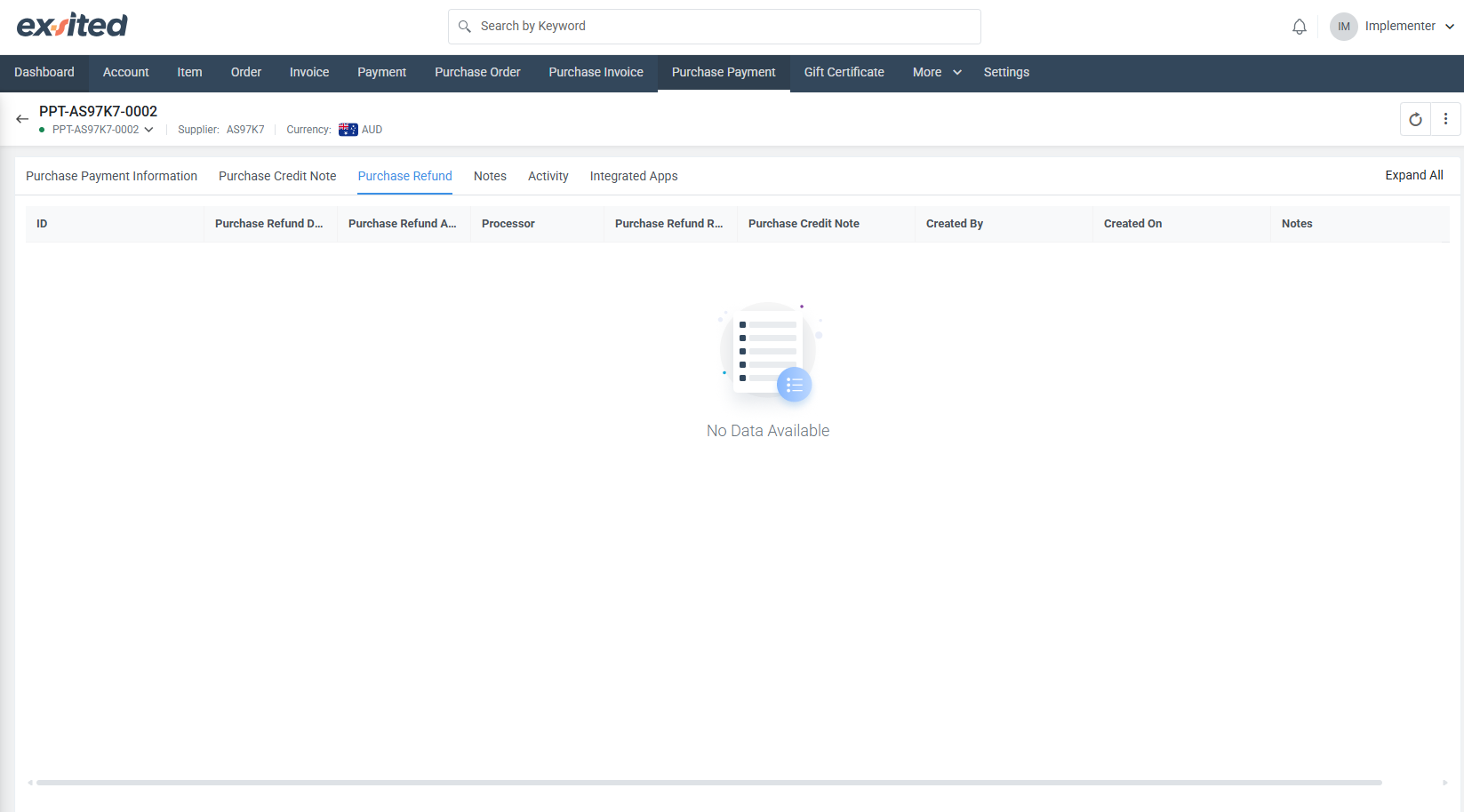
Notes
This section allows users to add and view internal notes related to the purchase payment record. Notes can include important context, reminders, or communication logs for internal tracking. If no notes have been added yet, a "No Note" message will be displayed with an option to Add Note. This feature helps maintain a clear audit trail and facilitates better collaboration among team members.

Activity
This section displays a chronological log of system-generated and user-initiated events related to the purchase payment record. It includes detailed messages, timestamps, actors (users or systems), source IP addresses, and the execution status of each action. This log provides transparency into key system activities, such as creation, scheduling, and processing of events. All entries are automatically recorded to ensure traceability and maintain a robust audit trail. The "System Log" helps users track workflow progress and effectively diagnose any processing issues.
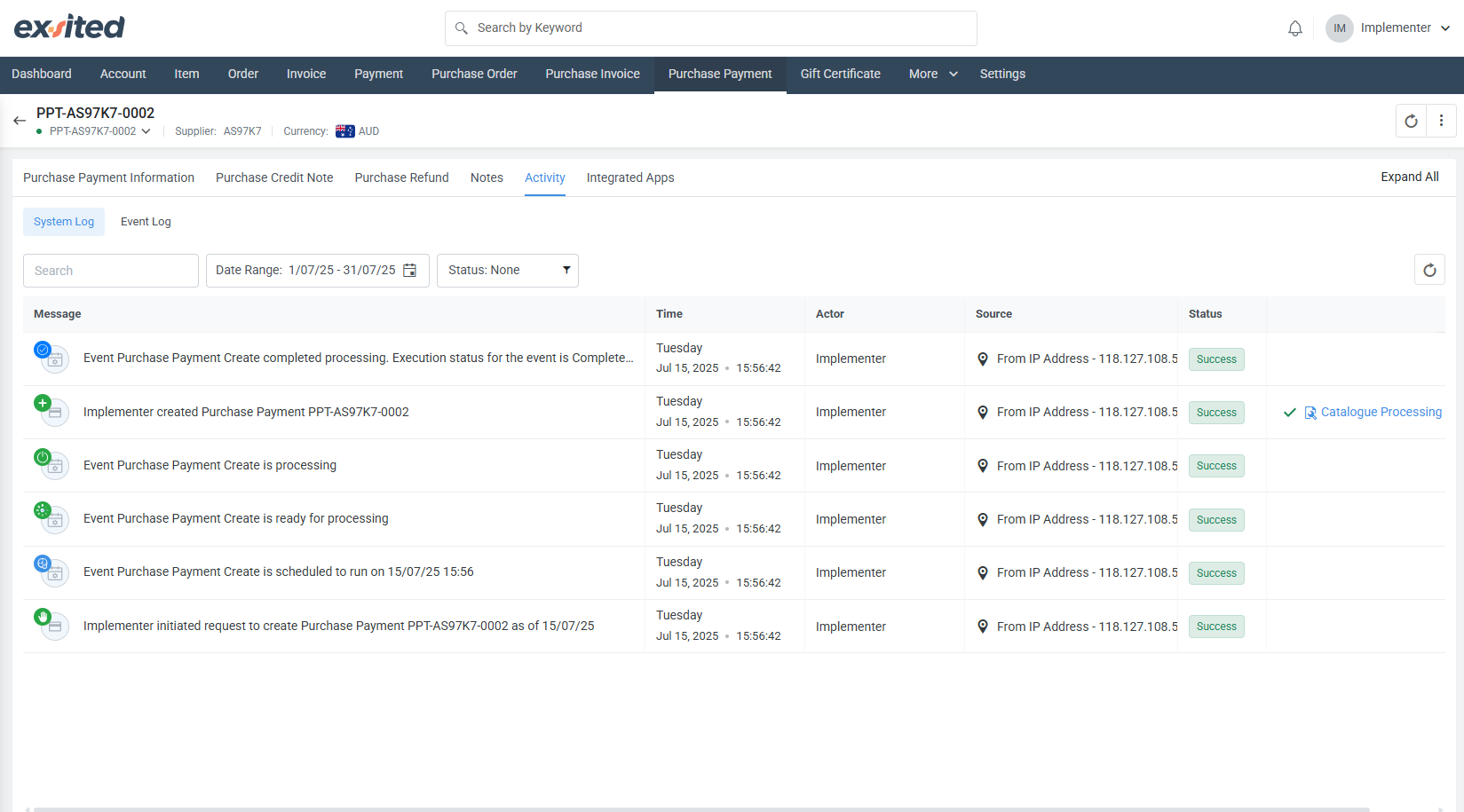
Integrated Apps
This section displays information about third-party application integrations related to the purchase payment record. Users can view the status of linked apps, such as accounting or financial software, and manage connections directly from this interface. Options to link, open, or export data to integrated apps are provided to streamline workflow and data synchronisation. If no integration has been established yet, a "No Data Available" message will be shown. This feature helps ensure seamless connectivity and efficient management of external application data.
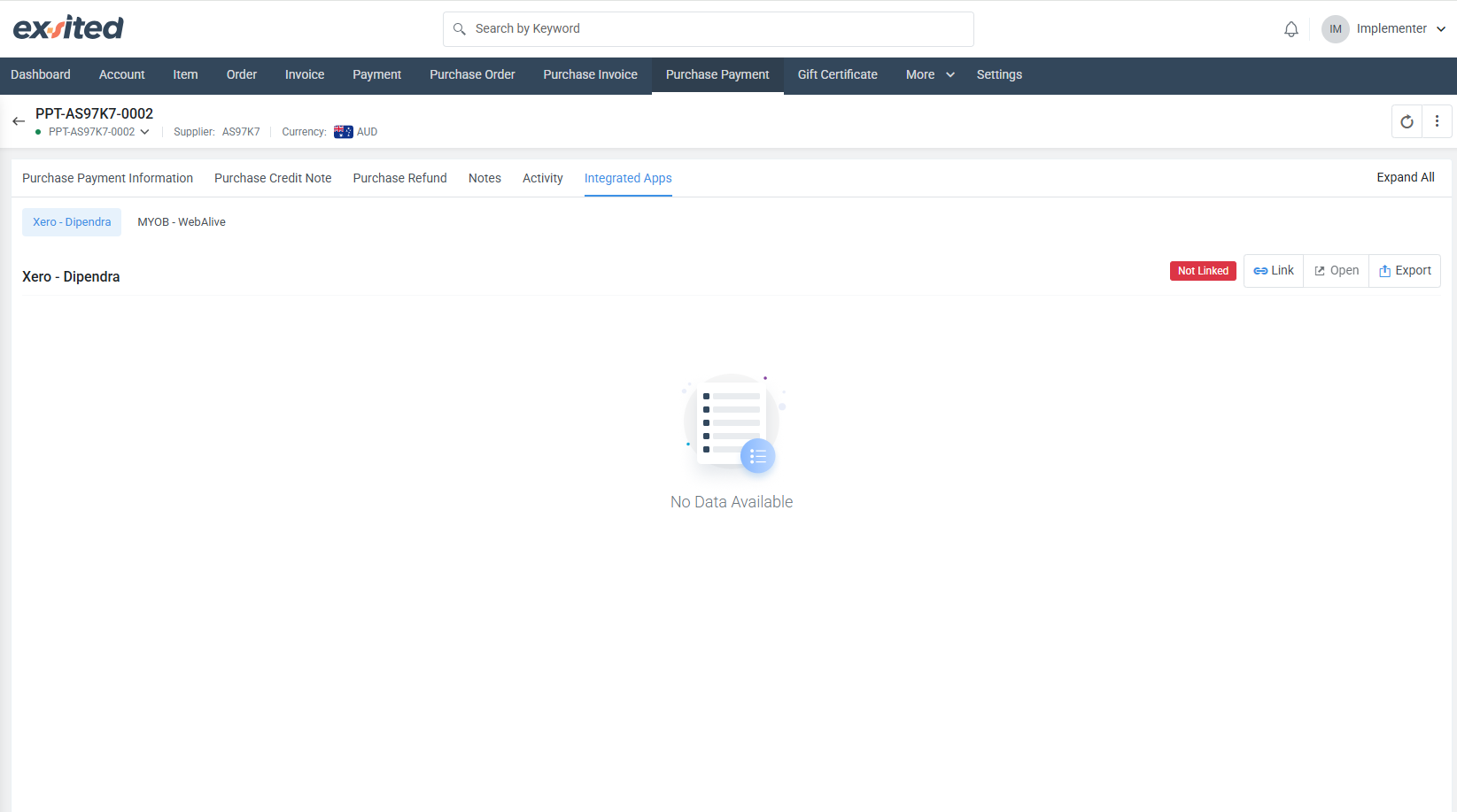
System Flow and Validation Rules
- Payment cannot be applied unless the Purchase Invoice is approved.
- The Applied Amount must not exceed the Outstanding Amount.
- Users can apply multiple payment lines using different methods (e.g., part cash, part cheque).
- All records are automatically timestamped and assigned to the user applying the payment.
Benefits of the Purchase Payments Model in Exsited
- Streamlined Accounts Payable with proper invoice-to-payment traceability.
- Secure and auditable transaction records with automatic system IDs.
- Flexible Payment Options including Cash, Bank Deposit, and Cheque.
- Real-time Reconciliation and visibility in financial reports.
- Supports multi-currency and tax-compliant workflows if configured.
Integration Touchpoints
| System Component | Interaction |
|---|---|
| Supplier Master (Account Module) | Provides bank/payment details and default currency |
| Purchase Invoice Module | Base document that initiates payment eligibility |
| Audit Logs | Records all payment applications and modifications |
| Reports Module | Allows generation of purchase payment summaries, outstanding balances, and applied vs. unapplied amounts |
Related Modules
| Related Module | Description |
|---|---|
| Purchase Invoice | Source document to which payment is applied. Must be approved before a payment can be processed. |
| Purchase Order | The initial order sent to the supplier. It precedes invoice generation. |
| Account Module | Holds supplier profiles and payment terms, linked during payment processing. |
| Payment Reconciliation | Used to reconcile payments made against statements or bank records. |
| Report Module | Provides detailed reports on all purchase payments for auditing and financial analysis. |
Tips for Users
- Use "Draft" if you are entering payments in stages.
- Always select the correct Payment Processor to ensure consistency in accounting integration.
- Use "Add Note for this Action" checkbox to leave internal comments or audit trails.